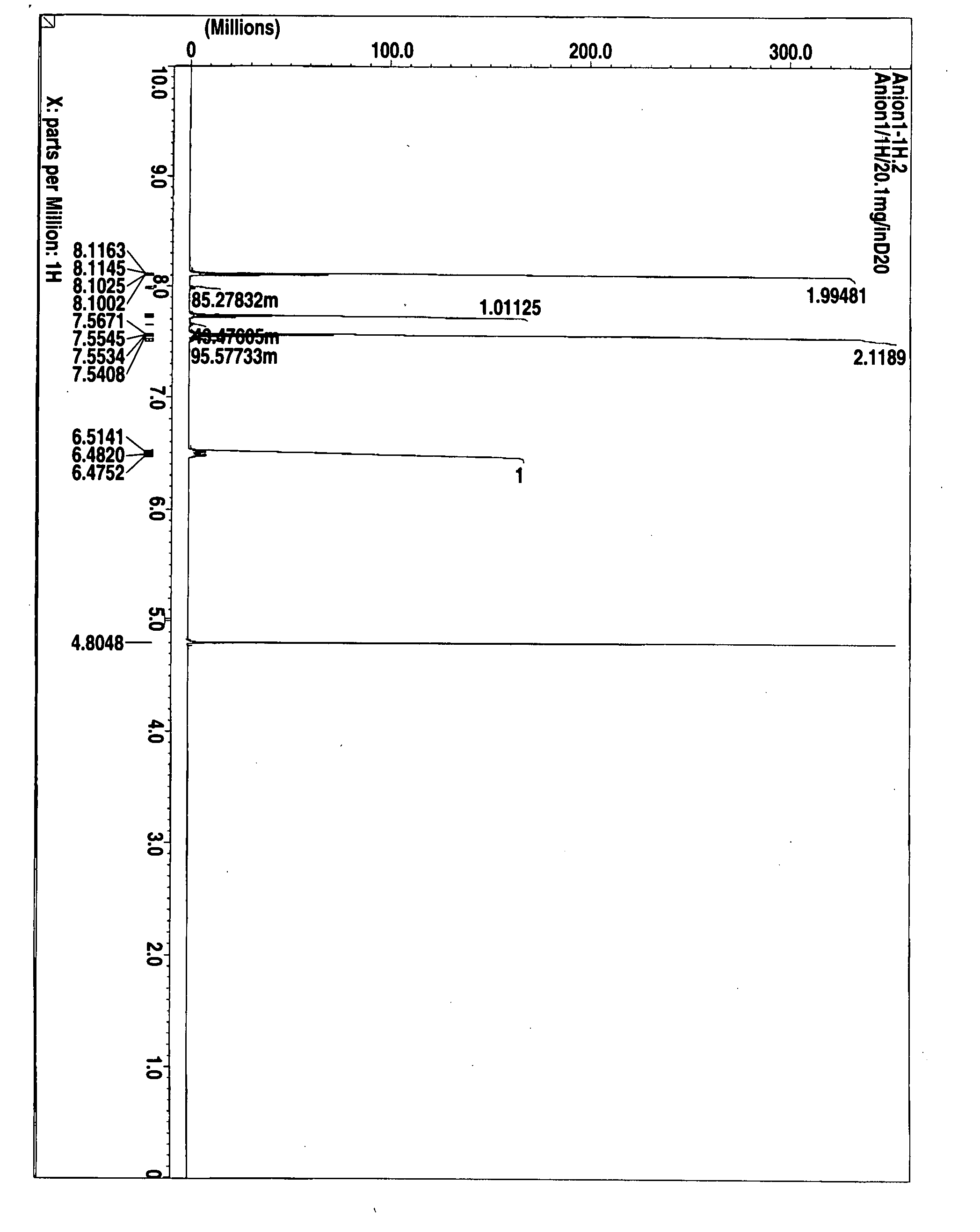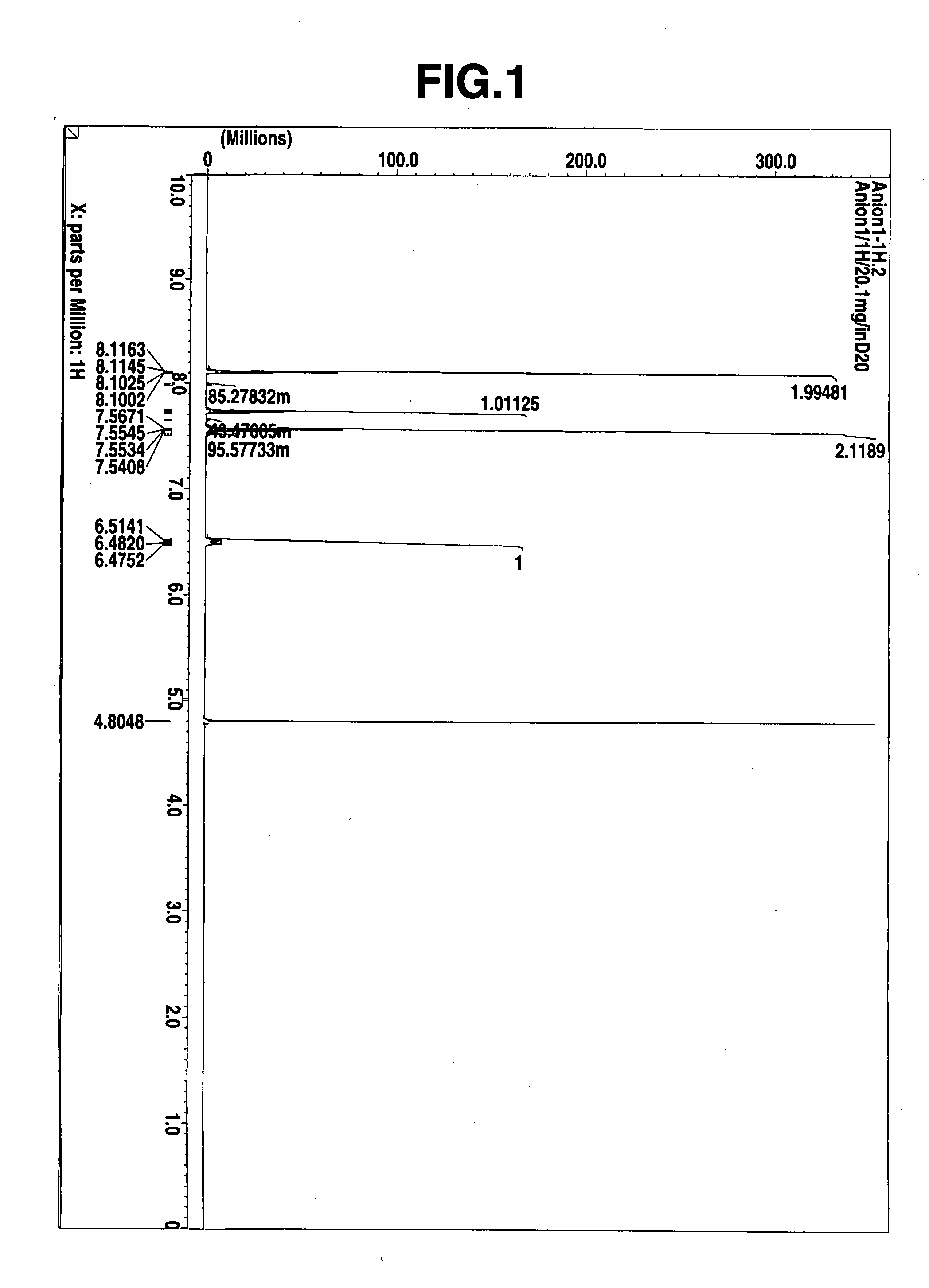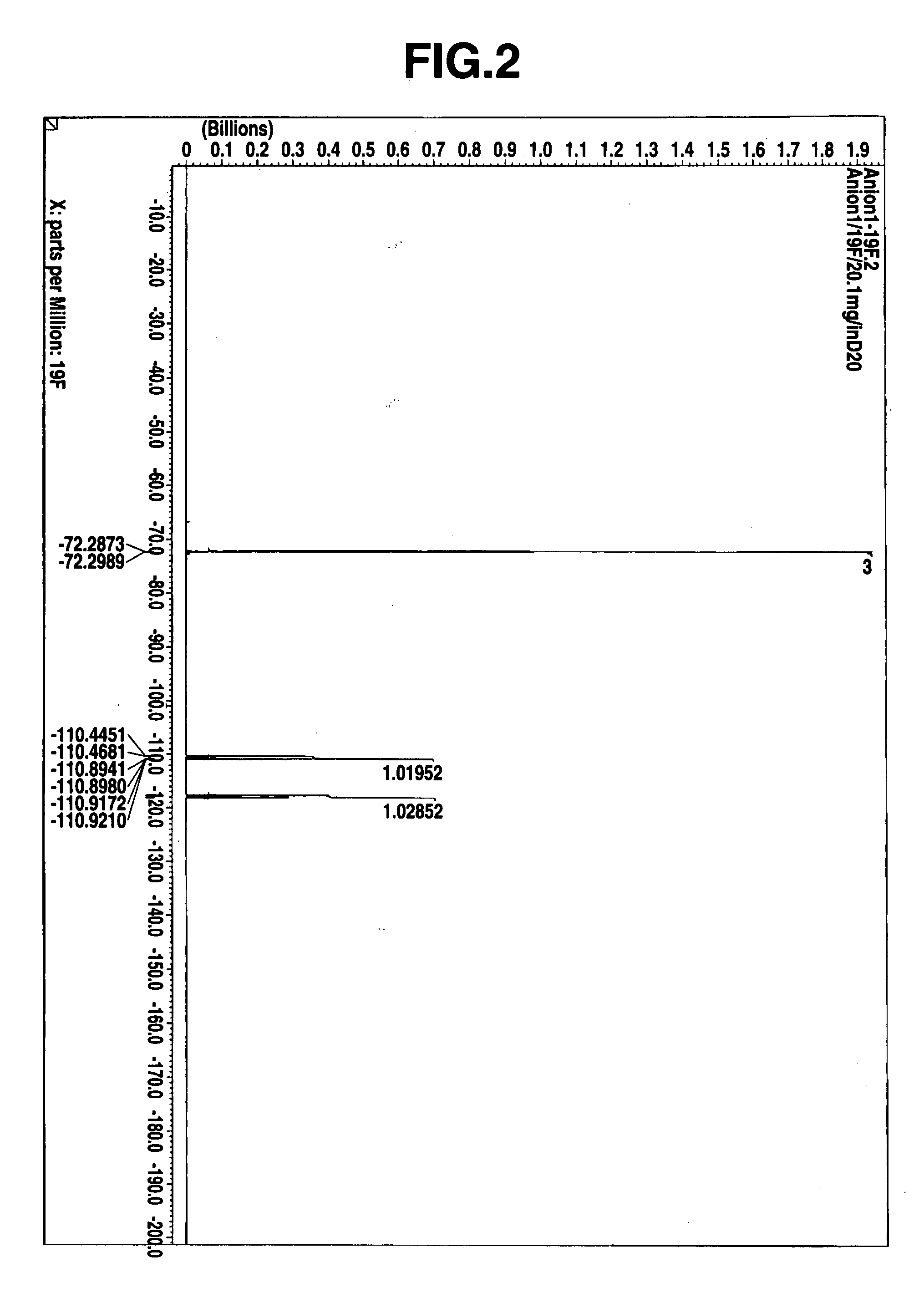Thermal acid generator, resist undercoat material and patterning process
a technology of resist undercoat and generator, applied in the direction of photosensitive materials, instruments, photomechanical equipment, etc., to achieve the effects of reducing the number of atoms
- Summary
- Abstract
- Description
- Claims
- Application Information
AI Technical Summary
Benefits of technology
Problems solved by technology
Method used
Image
Examples
synthesis example 1
Synthesis of Triphenylsulfonium Chloride
[0142] Diphenyl sulfoxide, 40 g (0.2 mol), was dissolved in 400 g of dichloromethane, which was stirred under ice cooling. At a temperature below 20° C., 65 g (0.6 mol) of trimethylsilyl chloride was added dropwise to the solution, which was aged at the temperature for 30 minutes. Next, a Grignard reagent which had been separately prepared from 14.6 g (0.6 mol) of metallic magnesium, 67.5 g (0.6 mol) of chlorobenzene, and 168 g of tetrahydrofuran (THF) was added dropwise at a temperature below 20° C. The reaction solution was aged at the temperature for one hour. At a temperature below 20° C., 50 g of water was added to quench the reaction. To this solution, 150 g of water, 10 g of 12N hydrochloric acid and 200 g of diethyl ether were further added.
[0143] The water layer was separated and washed with 100 g of diethyl ether, yielding an aqueous solution of triphenylsulfonium chloride. The compound in aqueous solution form was used in the subs...
synthesis example 2
Synthesis of 4-tert-butylphenyldiphenylsulfonium bromide
[0144] The target compound was obtained by following the procedure of Synthesis Example 1 aside from using 4-tert-butylbromobenzene instead of the chlorobenzene in Synthesis Example 1 and increasing the amount of water for extraction.
synthesis example 3
Synthesis of 4-tert-butoxyphenyldiphenylsulfonium chloride
[0145] The target compound was obtained by following the procedure of Synthesis Example 1 aside from using 4-tert-butoxychlorobenzene instead of the chlorobenzene in Synthesis Example 1, using dichloromethane containing 5 wt % of triethylamine as the solvent, and increasing the amount of water for extraction.
PUM
| Property | Measurement | Unit |
|---|---|---|
| wavelength | aaaaa | aaaaa |
| size | aaaaa | aaaaa |
| feature size | aaaaa | aaaaa |
Abstract
Description
Claims
Application Information
 Login to View More
Login to View More - R&D
- Intellectual Property
- Life Sciences
- Materials
- Tech Scout
- Unparalleled Data Quality
- Higher Quality Content
- 60% Fewer Hallucinations
Browse by: Latest US Patents, China's latest patents, Technical Efficacy Thesaurus, Application Domain, Technology Topic, Popular Technical Reports.
© 2025 PatSnap. All rights reserved.Legal|Privacy policy|Modern Slavery Act Transparency Statement|Sitemap|About US| Contact US: help@patsnap.com



